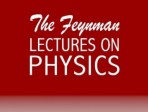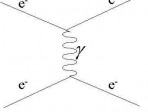Neutrinos: a Golden Field for Astroparticle Physics
Neutrinos have been the origin of an impressive number of ‘surprises’. We know that neutrinos have tiny masses and that oscillations are occurring spontaneously between neutrino species. But additional new discoveries may be ahead of us and t....
More details | Watch now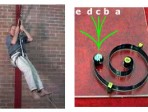 00:10:00
00:10:00
Newton’s laws of motion
F=ma (laws 1&2). Forces come in pairs that add to zero (3). Newton's laws apply in inertial frames of reference. Some common approximations made in applying them.
More details | Watch now 00:08:00
00:08:00
Nicolaas Bloembergen
Interview with Nicolaas Bloembergen, USA, who shared half of the Nobel Prize for Physics in 1981 with Arthur Leonard Schawlow, USA 'for their contributions to the development of laser spectroscopy' He discusses the technical developments of his work ....
More details | Watch now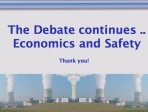 00:07:00
00:07:00
Nuclear Power in the United States
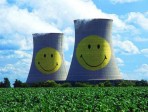 01:00:00
01:00:00
Nuclear Power Plant Safety – What’s the Problem?
A significant proportion of our electricity is generated by thermonuclear reactions. The dangers attached to these processes and the radioactive products are well known and publicised. Much less well known are the measures taken to ensure that the hi....
More details | Watch now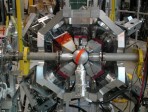 00:05:00
00:05:00
Nuclear Structure and Gamma-ray Spectroscopy
The use of gamma-ray spectroscopy to study the structure of less well-known nuclei.
More details | Watch now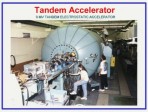 00:06:00
00:06:00
Nuclear Structure Studies at FSU
An overview of the low energy structure nuclear structure nphysics at Florida State University by a graduate student. The nparticle accelerator as well as certain nuclear experiments are described nto give insight into the research possibilities avai....
More details | Watch now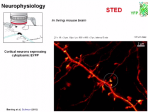 00:28:00
00:28:00
Optical Microscopy – the Resolution Revolution
Throughout the 20th century it was widely accepted that a light microscope relying on conventional optical lenses cannot discern details that are much finer than about half the wavelength of light (200-400 nm), due to diffraction. However, in the 199....
More details | Watch now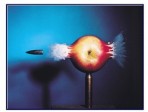 01:08:00
01:08:00
Optical science in the fast lane
In this talk Wilson Sibbett introduces some of the underlying concepts that have enabled us to develop practical ultrafast lasers and a selection of applications that range from the fundamentals of chemical bonding to weapons decommissioning!
More details | Watch now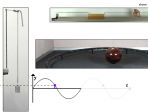 00:09:00
00:09:00
Oscillations
Inertia and restoring forces can, with low friction or damping, lead to oscillations and resonance. We analyse the mechanics of vibrations.
More details | Watch now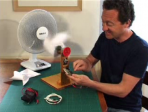 00:09:00
00:09:00
Paper Windmills
Jonathan makes some simple paper windmills/turbines and experiments with a simple generator to power house hold devices such as torches, calculators and even a radio.
More details | Watch now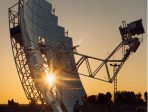 00:02:00
00:02:00
Parabolic Light Collectors
Parabolic surfaces can be used to concentrate energy for example to focus sunlight to heat things. Using an old World War II spot light mirror we demonstrate how easy it it is to concentrate enough energy to cause combustion. Finally, we show how to ....
More details | Watch now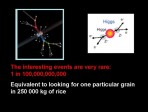 00:41:00
00:41:00
Particle Physics and the Mysteries of the Early Universe
Dr Cristina Lazzeroni, a Royal Society University Research Fellow from the University of Birmingham, reveals the secrets of the world's largest accelerator, the Large Hadron Collider and how the LHC experiments hope to answer big questions about the ....
More details | Watch now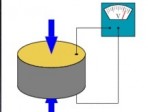 00:03:00
00:03:00
Piezoelectricity
Some minerals such as quartz can produce electricity simply by squeezing or bending them - these are called piezoelectric crystals. Here is a simple and cheap demonstration you can do.
More details | Watch now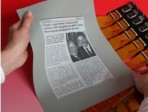 01:03:00
01:03:00
Plastic fantastic: electronics for the 21st century
Plastics - or, more correctly, polymers have traditionally been used by the electronics industry as passive materials. Now however, new types of polymers have been discovered which behave as semiconductors. For example, they can emit light when subje....
More details | Watch now 00:07:00
00:07:00
Potato Battery
When two different types of conductors are pushed into a potato chemical reactions take place charging them up - we have a simple electrochemical cell. A potato, zinc screw and carbon rod produce about 1V. We experiment joining a few of these cells u....
More details | Watch now 00:30:00
00:30:00
Powering the Future
Some seeds of what to do in the climate/energy controversy are contained in what will be. In this talk I shall ask everyone to jump over contemporary politics and make a mental journey to a time, several centuries from now, when nobody uses carbon-....
More details | Watch now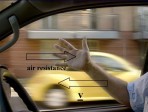 00:09:00
00:09:00
Projectile motion
Motion with uniform acceleration, such as in a uniform gravitational (or electric) field is projectile motion, analysed here with examples.
More details | Watch now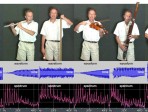 00:09:00
00:09:00
Quantifying sound
Frequency, amplitude, envelope and spectrum affect pitch, loudness and timbre. All are discussed and quantified here.
More details | Watch now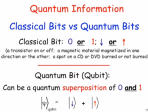 00:31:00
00:31:00
Quantum Information: a Scientific and Technological Revolution for the 21st Century
Two of the great scientific and technical revolutions of the 20th century were the discovery of the quantum nature of the submicroscopic world, and the advent of information science and engineering. Both of these have had a profound effect not only o....
More details | Watch now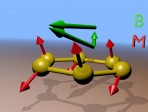 00:01:00
00:01:00
Quantum Spin Hall effect in graphene
The quantum spin Hall effect is a topological state of matter characterized by sustaining gapless chiral edge states together with an insulating bulk. This phase can be triggered out by applying strong magnetic fields in a graphene sample
More details | Watch now 00:06:00
00:06:00
Radiation in Your Kitchen: Basic Microwave Oven Physics
They're awesome to have in the kitchen, but did you ever wonder how your microwave actually works? This is a quick introduction to the theory that makes our home microwave ovens possible. Here, Daniel covers the differences between microwave heati....
More details | Watch now 00:04:00
00:04:00
Real Gases
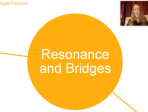 00:03:00
00:03:00
Resonance and Bridges
Abbie describes why bridges must be designed to counteract the effects of unwanted vibrations.
More details | Watch now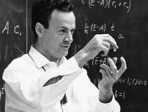 01:18:00
01:18:00
Richard Feynman – The Douglas Robb Memorial Lectures – Part 1
A gentle lead-in to the subject, Feynman starts by discussing photons and their properties.
More details | Watch now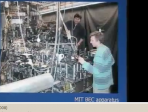 00:25:00
00:25:00
Role of Cortical Noise in Vision
Our brains are always generating electrical signals, even if we close our eyes, plug our ears, and lie in a warm bath. These signals are called cortical noise because they don't correlate with any sensation or thought of which we are aware. I will ....
More details | Watch now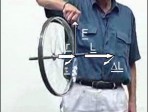 00:10:00
00:10:00
Rotation
Torques produce angular acceleration, moment of inertia 'resists' it. Rotational kinetic energy and angular momentum.
More details | Watch now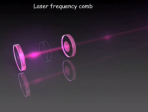 00:35:00
00:35:00
Science with Combs of Light
The spectrum of a frequency comb, commonly generated by a mode-locked femtosecond laser, consists of several hundred thousand precisely evenly spaced spectral lines. Such laser frequency combs have revolutionized the art of measuring the frequency of....
More details | Watch now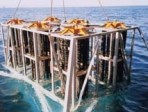 00:04:00
00:04:00
Seawater Battery
When two different metals are placed in a salt solution (an electrolyte) the chemistry produces a voltage. This is called a cell. By wiring up a number of these cells we can make a battery and use it to power electrical circuits.
More details | Watch now 00:04:00
00:04:00
Shake-a-Gen
This is a simple yet effective demonstration of electricity generation. 500 turns of wire are wound onto a 35mm film can and the two ends are attached to an LED light. A strong magnet is placed in the can and the lid fixed back in place. The generato....
More details | Watch now 00:06:00
00:06:00
Simple Electrical Generator
With some simple circuitry and a homemade hand powered generator Jonathan makes AC and DC electricity that could be used for charging a mobile phone or attaching to a wind turbine.
More details | Watch now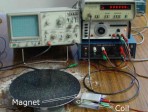 00:08:00
00:08:00
Simple harmonic motion
In simple harmonic motion, displacement, velocity and acceleration vary sinusoidally with time, but with different phases.
More details | Watch now 00:04:00
00:04:00
Sizing Things Up
Dr Tara Shears explains that one of Science's greatest achievements is to have accurately measured everything from the width of the universe to the diameter of a quark. This film features an animated zoom in from the universe to the heart of a hydrog....
More details | Watch now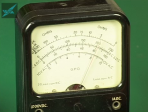 00:06:00
00:06:00
Solar Cells
A short video on solar cells explaining with accompanying information sheet. How they work and how Jonathan uses solar power at home.
More details | Watch now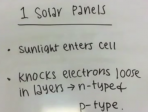 00:05:00
00:05:00
Solar Energy
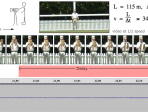 00:09:00
00:09:00
Sound
Sound is a longitudinal wave of variations in pressure and density. We derive and measure its speed.
More details | Watch now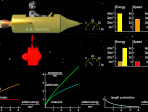 00:09:00
00:09:00
Special relativity
How extending Galileo's relativity to magnetism leads to Einstein's relativity, time dilation, length contraction, relativity of simultaneity and E=mc2 .
More details | Watch now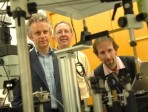 00:58:00
00:58:00
Spectroscopy and beyond
Professor Sir Richard Friend is Cavendish Professor of Physics and part of the Optoelectronics Group at the Cavendish Laboratory, University of Cambridge.His research interests cover: 1) Conjugated Polymers, in particular the development of new semic....
More details | Watch nowSpontaneous Ionization to Subatomic Physics: Some Vignettes from Cosmic Ray History
In 1879 Crookes discovered that air seemed to ionize spontaneously. With the discovery in 1896 of radioactivity by Henri Becquerel it appeared that the mystery was solved. However a number of physicists sought a quantitative agreement between the....
More details | Watch now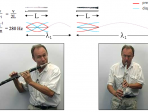 00:09:00
00:09:00
Standing waves
Reflecting waves gives standing waves, which can be resonances. Standing waves on strings and in pipes and plates.
More details | Watch now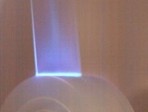 00:09:00
00:09:00
Sticky tape X-rays
Peeling sticky tape emits energy that extends into the X-ray regime, reports a study in Nature. The research provides evidence for a phenomenon that was first observed more than 50 years ago.nnIt is well known that unwinding sticky tape produces spar....
More details | Watch now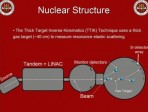 00:04:00
00:04:00
Studying Macroscopic Stars Through Microscopic Nuclear Reactions
Astrophysics is one of the driving forces behind the study of nuclear reactions and nuclear structure. The FSU Department of Nuclear Physics has the facilities and techniques needed to experimentally explore both of these topics. This video briefly....
More details | Watch now 00:10:00
00:10:00
Superconductivity
This video shows a terrific selection of superconducting demonstrations and explanations.
More details | Watch now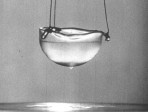 00:15:00
00:15:00
Superfluidity in Helium 3 – Nobel Physics Prize 1996
Together Osheroff and Richardson talk about their different scientific research backgrounds which leads a fascinating discussion on their joint work for the Noble Prize.
More details | Watch nowSuperposition, Entanglement, and Raising Schrödinger’s Cat
In 1935, Erwin Schrödinger, one of the inventors of quantum mechanics, illustrated his discomfort with the theory by pointing out that its extension to the macroscopic world could lead to bizarre situations such as a cat being simultaneously alive a....
More details | Watch now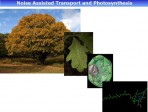 01:03:00
01:03:00
Taming the Quanta
Devices are now reaching the realm where individual structures are made up of only a few atoms so that quantum mechanics, the theory of the very small, is playing a crucial role. The inevitable quantum fluctuations produce noise which was initially e....
More details | Watch now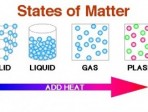 00:04:00
00:04:00
Temperature and States of Matter
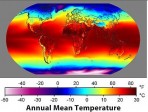 00:10:00
00:10:00
Temperature Scales
John Murrell explains scales and colour changes with temperature, boiling and melting,
More details | Watch now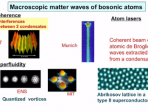 00:31:00
00:31:00
The Adventure of Cold Atoms. From Optical Pumping to Quantum Gases
Conservation laws are very important in quantum physics. Two examples of applications will be given. First, optical pumping which uses transfer of angular momentum from polarized photons to atoms to produce highly polarized atomic gases. Then, laser ....
More details | Watch now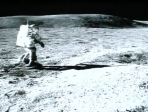 00:32:00
00:32:00
The Big Challenges
During the entire 20th century, physical sciences have advanced to such a degree that we can extrapolate how they can be applied, even in a fairly distant future. Even if we leave open the (likely) possibility of spectacular new discoveries and inv....
More details | Watch now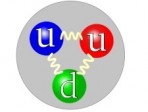 00:14:00
00:14:00
The Building Blocks of Matter
The Large Hadron Collider at CERN is the biggest science experiment ever built. Scientists from all over the world are heading to CERN with the aim of recreating particles from the beginning of the universe. Dr Brian Cox takes us on a scientific jour....
More details | Watch now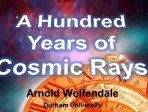 00:58:00
00:58:00
The Centenary of the Discovery of Cosmic Rays: the End of the Beginning
Sir Arnold Wolfendale FRS is Emeritus Professor of Physics at the University of Durham, and former Astronomer Royal. In 1912, Victor Hess embarked on a perilous balloon ascent and discovered the 'Cosmic Radiation', actually a beam of atomic particles....
More details | Watch now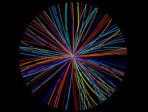 00:43:00
00:43:00
The Development of Particle Physics
Particle physics mainly developed after World War II. It has its roots in the first half of the previous century, when it became clear that all matter is made up from atoms, and the atoms in turn were found to contain a nucleus surrounded by electro....
More details | Watch now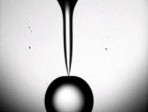 00:30:00
00:30:00
The Development of Particle Physics
Particle physics mainly developed after World War II. It has its roots in the first half of the previous century, when it became clear that all matter is made up from atoms, and the atoms in turn were found to contain a nucleus surrounded by electro....
More details | Watch now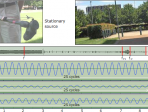 00:10:00
00:10:00
The Doppler effect
Moving either source or receiver produces a frequency shift called the Doppler effect, which we measure and analyse.
More details | Watch now 00:09:00
00:09:00
The dynamics of a spinning chair
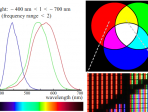 00:12:00
00:12:00
The eye and colour vision
The physics of the eye, its performance and colour vision: refraction and accommodation; photoreceptors and resolution; compromises in visual performance.
More details | Watch now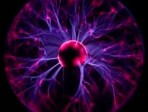 00:14:00
00:14:00
The Forces of Nature
Can everything that happens in the universe be explained in terms of just three forces? Particle Physicist Brian Cox talks us through the history of our scientific understanding, revealing why scientists have come to believe this. Brian explores the ....
More details | Watch now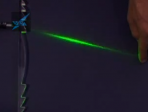 00:05:00
00:05:00
The Fresnel Lens
Early lighthouses used coil and wood fires before moving on to gas and then electricity powered lights. Massive improvements took place by using a lens system around the light. The development of the Fresnel lens brought what we now regard as the....
More details | Watch now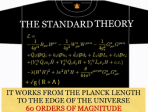 00:44:00
00:44:00
The Future of Particle Physics
Elementary Particle Physics seeks to discover the basic constituents of matter and understand the fundamental forces that act on them. In this lecture I shall review the current state of particle physics, the grand success of the ñstandard modelî, ....
More details | Watch now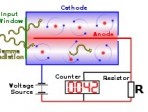 00:02:00
00:02:00
The Geiger Counter
Although essentially a very simple device the Gieger Counter is an exquisitely sensitive detector of ionising radiation. It can detect a single particle. Here we demonstrate its use in detecting radiation from minerals and describe in simple terms ho....
More details | Watch now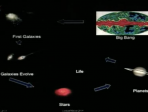 00:28:00
00:28:00
The History of the Universe, from the Beginning to the Ultimate End
John summarizes the history of the universe, from the Big Bang through the formation of galaxies and the Solar System, and the history of the Earth and some of the special factors enabling the formation of life. Our future will be hot as the Sun ge....
More details | Watch now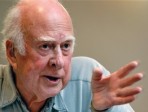 00:14:00
00:14:00
The Hunt for the Higgs
Particle physicist Brian Cox explains how quantum mechanics has changed the way that we think the world works and why it predicts the existence of a particle that has never been seen. The Higgs boson is a mysterious particle that explains why things ....
More details | Watch now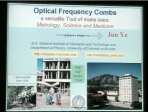 00:36:00
00:36:00
The Individuality of Light Quanta
Light quanta are the fundamental units of radiant energy. When propagating freely they travel at the fastest attainable speed and live forever. These properties recommend them as the ideal messengers for communication of all sorts. Ordinary light ....
More details | Watch now 00:35:00
00:35:00
The International Year of Light: Celebrating Fifty Years of Laser Revolution in Physics
The year 2015 has been named the International Year of Light, to mark milestones in the science of light which occurred 1000, 200, 150, 100 and 50 years go. I was a young student in physics in 1965, when the cosmic radiation background was discovered....
More details | Watch now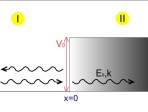 00:18:00
00:18:00
The Klein Paradox 1
Standard analysis of the relativistic dynamics of scattering on a step potential leads to a paradox that contradicts the standard interpretation of a wave function in nonrelativistic theory. It is shown how is this result obtained by not being carefu....
More details | Watch now 00:27:00
00:27:00
The Klein Paradox 2
Standard analysis of the relativistic dynamics of scattering on a step potential leads to a paradox that contradicts the standard interpretation of a wave function in nonrelativistic theory. It is shown how is this result obtained by not being carefu....
More details | Watch now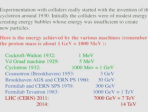 00:34:00
00:34:00
The LHC at CERN and the Higgs
The strong interactions, the forces responsible for the interactions between quarks and notably supposedly responsible for quark confinement, profited from the development of gauge theories. In the wake of the gauge theory of weak interactions also....
More details | Watch now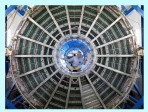 01:10:00
01:10:00
The LHC: largest experiment and smallest particles
The LHC is the most powerful particle accelerator ever built. It is capable of recreating the very energetic conditions last seen in the universe a billionth of a second after the Big Bang, and allows particle physicists to study the fundamental ingr....
More details | Watch now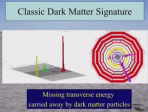 01:03:00
01:03:00
The Long Road to the Higgs Boson – and Beyond
The discovery of the Higgs boson at CERN’s LHC accelerator in 2012 by the ATLAS and CMS collaborations was the culmination of a decades-long search that had started in 1964 with the proposal of this unique particle, a signature of the origin of the....
More details | Watch now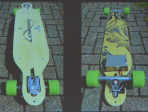 00:07:00
00:07:00
The Longboard – speedometer
Jonathan describes his adventures with a longboard and some different methods of making a speedometer for it.
More details | Watch now 00:32:00
00:32:00
The Looming World Shortage of Helium
The worldÍs supply of Helium gas comes primarily from alpha decay in rocks. The most abundant supply is in the American Southwest where it is trapped with methane is natural gas wells. That supply is estimated to last a mere 25 years. It took 4.7 bi....
More details | Watch now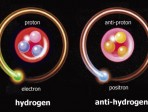 00:03:00
00:03:00
The Matter with AntiMatter
If equal amounts of matter and anitmatter were created at the birth of the universe then why does our universe seem to be made almost entirely from matter? Dr Tara Shears tells us how this mystery could be explained by the Large Hadron Collider exper....
More details | Watch now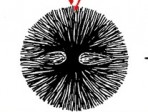 01:00:00
01:00:00
The mesoscopic world – from plastic bags to brain disease.
Structures looking broadly the same in the optical microscope are found in starch granules within plants, in polythene bags and in sections of diseased brain tissue. Athene Donald explores structural similarities between different assemblies of polym....
More details | Watch now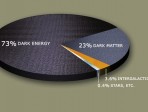 00:03:00
00:03:00
The Mystery of the Missing Mass
Dr Tara Shears explains why scientists are convinced that Dark Matter exists and how a new experiment called the Large Hadron Collider might finally tell us exactly what this mysterious missing mass is made of.
More details | Watch now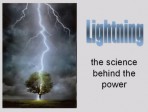 00:12:00
00:12:00
The Nature and Physics of Lightning
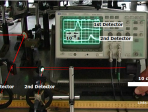 00:12:00
00:12:00
The nature of light
White light comprises colours in the visible spectrum. The electromagnetic spectrum. Speed of light. Young's experiment and waves. Quanta and photons.
More details | Watch now 01:15:00
01:15:00
The Nuclear Debate
New carbon targets requires reducing emissions of greenhouse gases by 50% for 2030. This house believes that it will be impossible to meet the emissions reductions required to fulfil these obligations without the use of nuclear power. Taking the pr....
More details | Watch now 00:32:00
00:32:00
The Optical Frequency Comb – a Really Versatile Tool
The Optical Frequency Comb concept and technology exploded in 1999-2000 from the synthesis of advances in independent fields of Laser Stabilization, UltraFast Lasers, and NonLinear Optical Fibers. The Comb was developed first as a method for optical....
More details | Watch now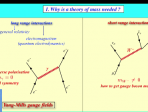 00:33:00
00:33:00
The Origin of Elementary Particle Masses
In the beginning of the 60s, the laws of classical general relativity, Einstein's generalisation of Newtonian gravity, and of quantum electrodynamics, the quantum version of Maxwell's electromagnetic theory, were known. These laws describe long range....
More details | Watch now 01:28:00
01:28:00
The Physics of Angels and Demons
Professor Harrison Prosper of FSU Physics Department looks at the science behind the recently released movie 'Angels and Demons', starring Tom Hanks and based upon a Dan Brown novel. Prof. Prosper discusses topics such as antimatter, dark matter, dar....
More details | Watch now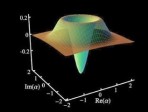 00:33:00
00:33:00
The Physics of Light
When asked how does he think about the problems of the physics of light, Glauber says that it is an off-shoot of particle physics. He says that he has mainly worked in nuclear physics, quantum electro-dynamics and the quantum theoretical version of M....
More details | Watch now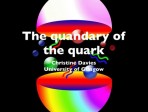 01:12:00
01:12:00
The quandary of the quark
99.9% of the visible material in the universe is made of quarks and yet we know surprisingly little about them. Professor Davies describes how the properties of the quark are now being revealed, and the implications that this will have for our unders....
More details | Watch now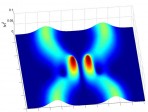 00:06:00
00:06:00
The Quantum Lattice
Awarded a Nobel Prize for using lasers to control and cool atoms, producing the Bose-Einstein condensation, Bill Phillips is eager to hear about new theories from young scientists like Hannah Venzl. An exciting dialogue develops between them on a boa....
More details | Watch nowThe Quantum Mechanics of Light: Interference, Entanglement – and Ghosts
The early days of the quantum theory presented many dilemmas connected with interference phenomena and what we have come to call the entanglement of states. We are much better able to deal with these problems now, both in theory and experiment, but t....
More details | Watch now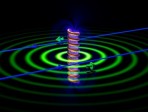 00:55:00
00:55:00
The Quantum World abserver by Electron Waves
Dr. Tonomura is a world renowned pioneer and authority in the field of electron holography, for which he has received many national and international recognitions. He is recognized for his contributions in the development of electron holography, the ....
More details | Watch now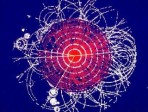 00:08:00
00:08:00
The Quest for The Higgs Particle
A Breathtaking Journey into the Innermost Structure of our Universe. Runner up: Best use of Animation and Best Short Documentary for the 2002 International Festival of Cinema and Technology.
More details | Watch now 00:30:00
00:30:00
The Real M-Theory
How can one advance a working hypothesis that will not be wrong tomorrow and ridiculous the day after? Beyond the Standard Model we find uncertainty and confusion, with both unclarity as to which might be the correct theory, as well as little in the ....
More details | Watch now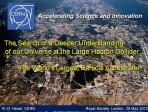 01:02:00
01:02:00
The search for a deeper understanding of our universe at the Large Hadron Collider
With the start of the Large Hadron Collider (LHC) at CERN, particle physics entered a new era. The LHC will provide a deeper understanding of the universe and the insights gained could change our view of the world, and the lecture will present some o....
More details | Watch now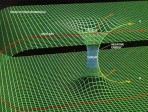 00:29:00
00:29:00
The Theory of Everything
Are we on the verge of that holy grail of science, a single theory that explains everything from planets to atomic particles, and if we ever get there, will it be the end, or the beginning of physics? Physicists have theories covering everything fr....
More details | Watch now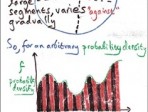 01:01:00
01:01:00
The uses of infinity: a philosopher looks at emergent phenomena in physics
Emergence, and its contrary, reduction, are buzz-words in both physics and philosophy. Both physicists and philosophers disagree about the extent to which we can understand large-scale or complex phenomena in terms of their microscopic parts.
More details | Watch now